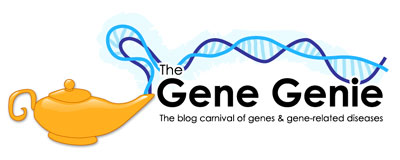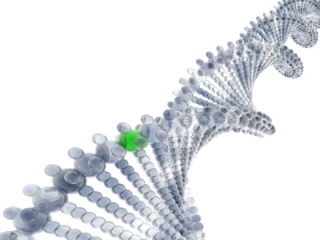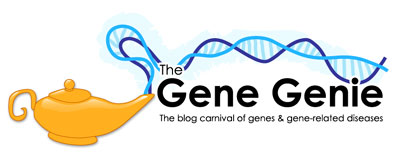Yesterday I wrote about a study that used SNPs to haplotype the Y chromosomes of ancient DNA obtained from skeletons found along the Yangtze River in
The Beothuk were a Native American group that lived on
Yesterday I wrote about a study that used SNPs to haplotype the Y chromosomes of ancient DNA obtained from skeletons found along the Yangtze River in
The Beothuk were a Native American group that lived on
 
Don’t forget to submit an article or post for the upcoming Gene Genie carnival!

In the past, scientists have primarily examined the mtDNA of ancient DNA.After all, mtDNA is much more prevalent (100’s to 1000’s of copies per cell) than nuclear DNA (just 1 copy per cell) and thus it is easier to find samples that are not degraded by time.New amplification techniques as well as improved anti-contamination procedures have made it possible for Y chromosomal DNA to be
In a new study (epub ahead of print – which means that it is available online before it is published in Human Genetics), researchers examined the remains of male skeletons that were buried in the loessal soil in Maqiao, Xindili, Wucheng, Daxi, and Taosi, areas along the Yangtze River.Interestingly, these skeletons were buried without chests or coffins.Using a well-established set of anti-contamination procedures, DNA was extracted and five SNPs were typed for each individual (when possible): M119, M95, M122, M7, and M134.According to YCC nomenclature, those SNPs delineate the O1, O2a, O3*, O3d, and O3e haplogroups.The scientists found that:
Jason Bobe over at The Personal Genome has a great post this week called “False Alarm: The Celebrity Meme” about the use of ‘famous’ scientists in early genome sequencing. He poses a number of interesting and thought-provoking questions about the topic. Make sure you read the comments that others have left. Hsien at EyeonDNA wrote so much that she made her answers a full-length post.
The subject is traveling all over the blogosphere. The Rocketfish Manifesto addresses personal genome sequencing with a little bit of humor. And John Hawks’ Anthropology Weblog has a lengthy post with some new insights. There is a lot of great reading material available if you’re interested in the Personal Genome Project.
I recently came across a review article by Henry T. Greely, a Professor of Law, Professor (by courtesy) of Genetics, and Director of the Center for Law and Bioethics at Stanford.The article is entitled “The Uneasy Ethical and Legal Underpinnings of Large-Scale Genomic Biobanks (pdf)†and was recently published in the Annual Review of Genomics and Human Genetics.
According to Mr. Greely, the identity of participants in large-scale genomic biobanks cannot effectively protected.A biobank is defined as a database of genotypic and phenotypic data.Using genetic information, physical information, or a combination of the two, people can identify an individual in such a large database:
“Someone really interested could get a DNA sample from me – from a licked stamp, a drinking glass, or some tissue – and have it genotyped for a few hundred dollars, but few will have to go to the genomic data; the phenotypic and demographic data will often be sufficient.â€

Just a quick reminder that the 12th issue of Gene Genie will be hosted here on The Genetic Genealogist on August 12th! If you have a gene- or genetic-related post, submit it via the carnival site, or directly to me.
 A recent study (epub ahead of print) published in Human Heredity examines the Y-DNA and mtDNA haplogroups of 120 black males from
A recent study (epub ahead of print) published in Human Heredity examines the Y-DNA and mtDNA haplogroups of 120 black males from
Interestingly, the study showed that while only 48% of the Y-DNA was characteristic of sub-Saharan
A couple of interesting news articles from Megan’s Root World:
 As you all know, I have high hopes for the genetic profiling company 23andMe. Although 23andMe has not officially launched a product available to the public, it turns out that the founders have chosen a great name for their company.
As you all know, I have high hopes for the genetic profiling company 23andMe. Although 23andMe has not officially launched a product available to the public, it turns out that the founders have chosen a great name for their company.
Nancy Friedman, a name developer and corporate copywriter based in Oakland, has written a lengthy analysis of the name ‘23andMe’ on her blog ‘Away with Words.’She suggests that the name was deftly crafted and is even better than the oft-suggested name ‘46andMe.’Ms. Friedman’s post is also the first place I’ve ever seen a pronunciation for Anne Wojcicki’s last name (which is wo-JIT-skee).Turns out I wasn’t too far off!
Here they are, the “First 10”, the first ten volunteers of the Personal Genome Project, announced today:
Rosalynn Gill-Garrison